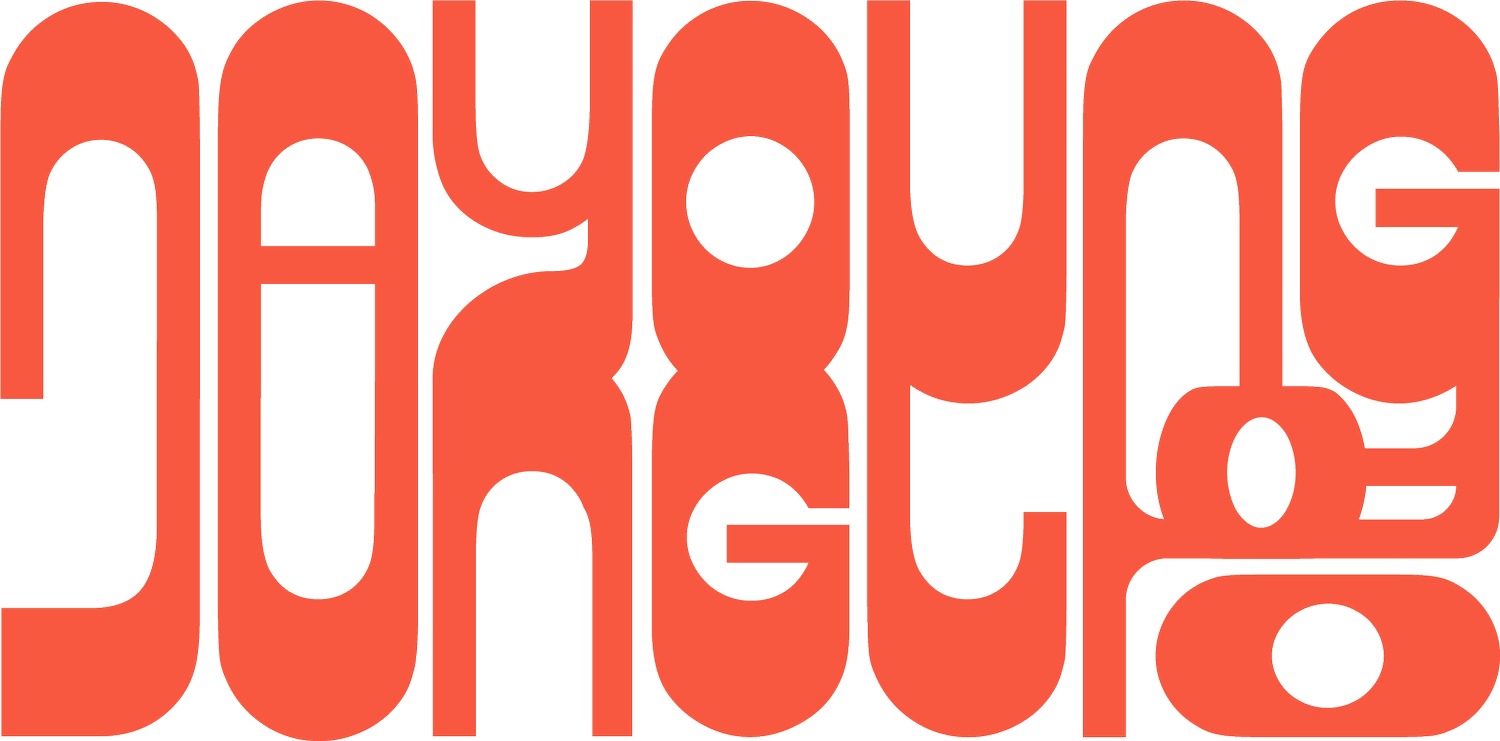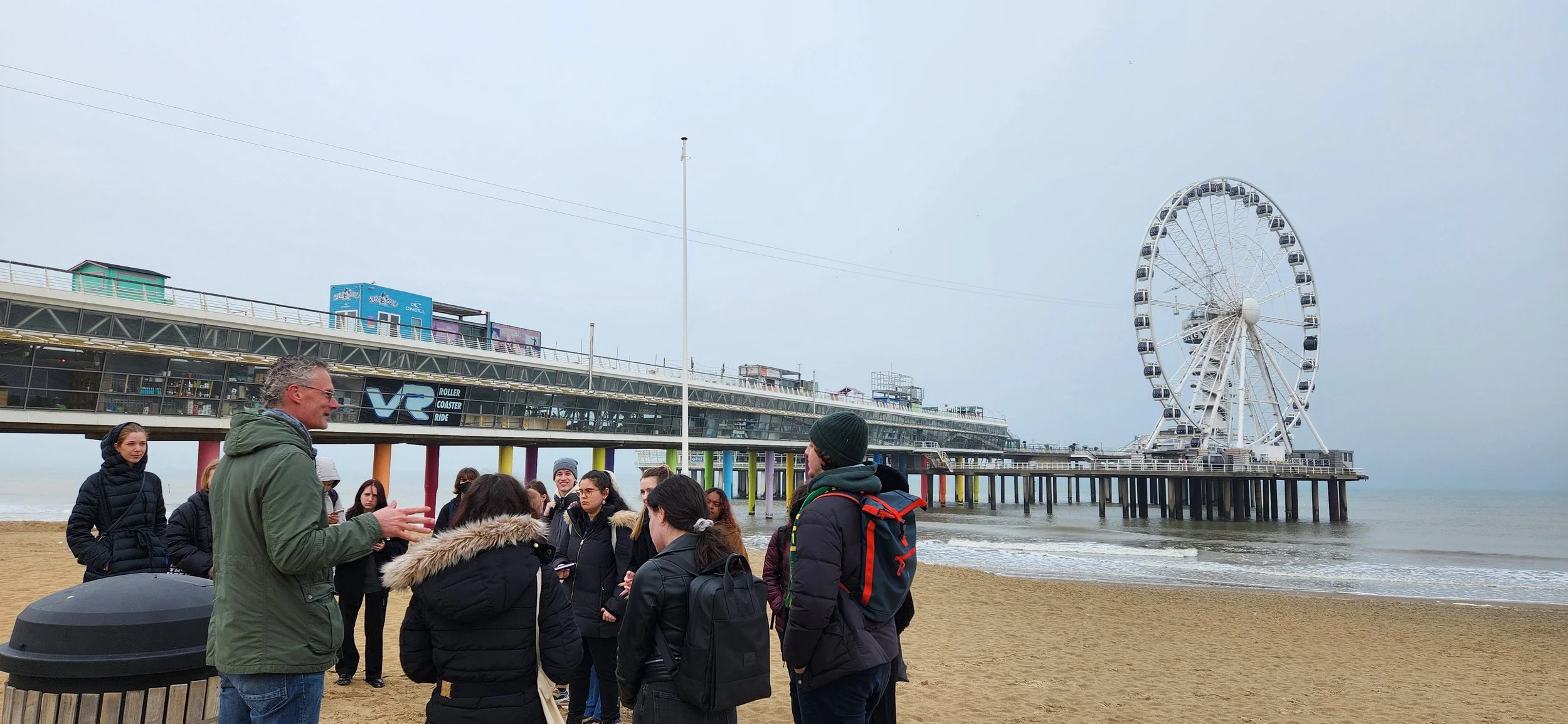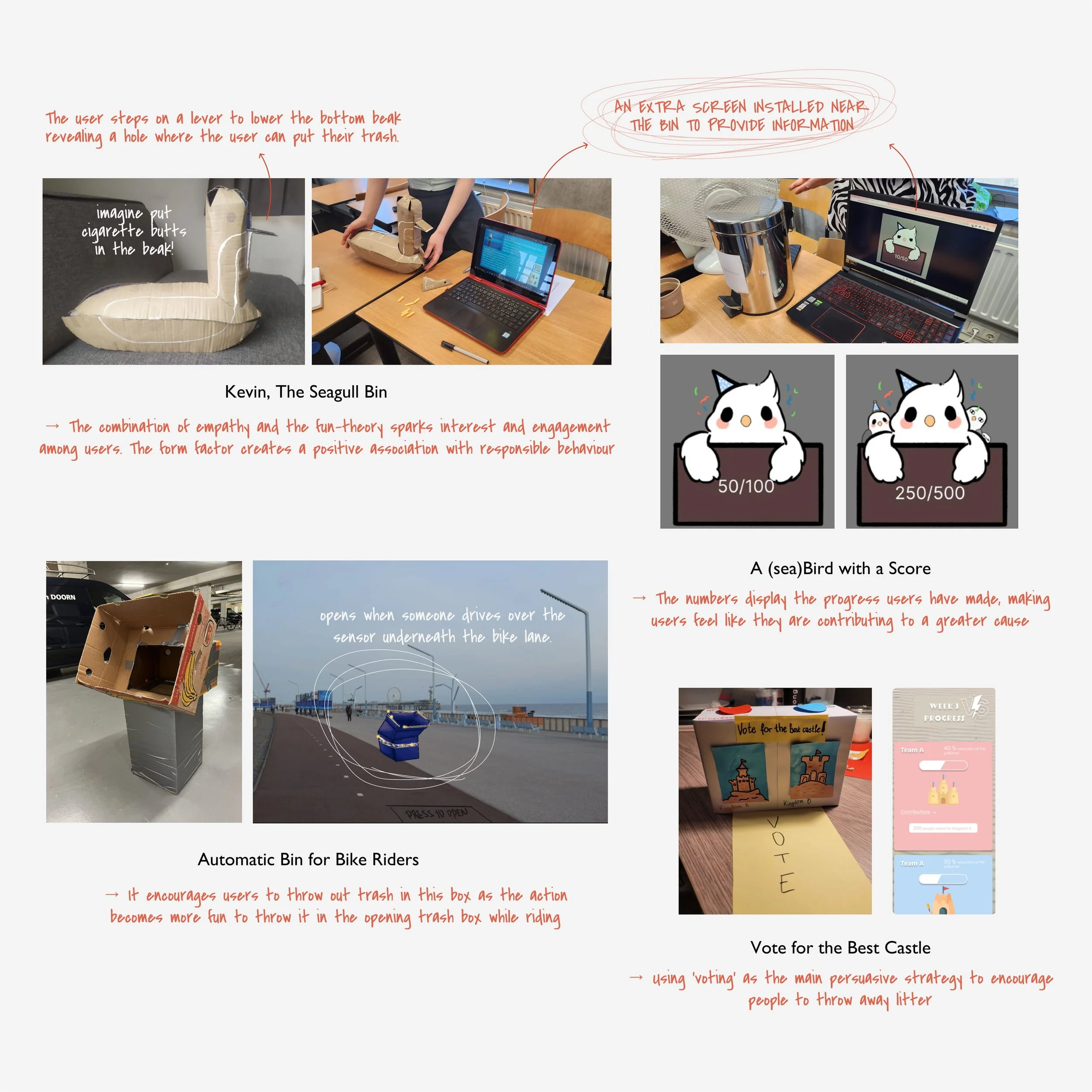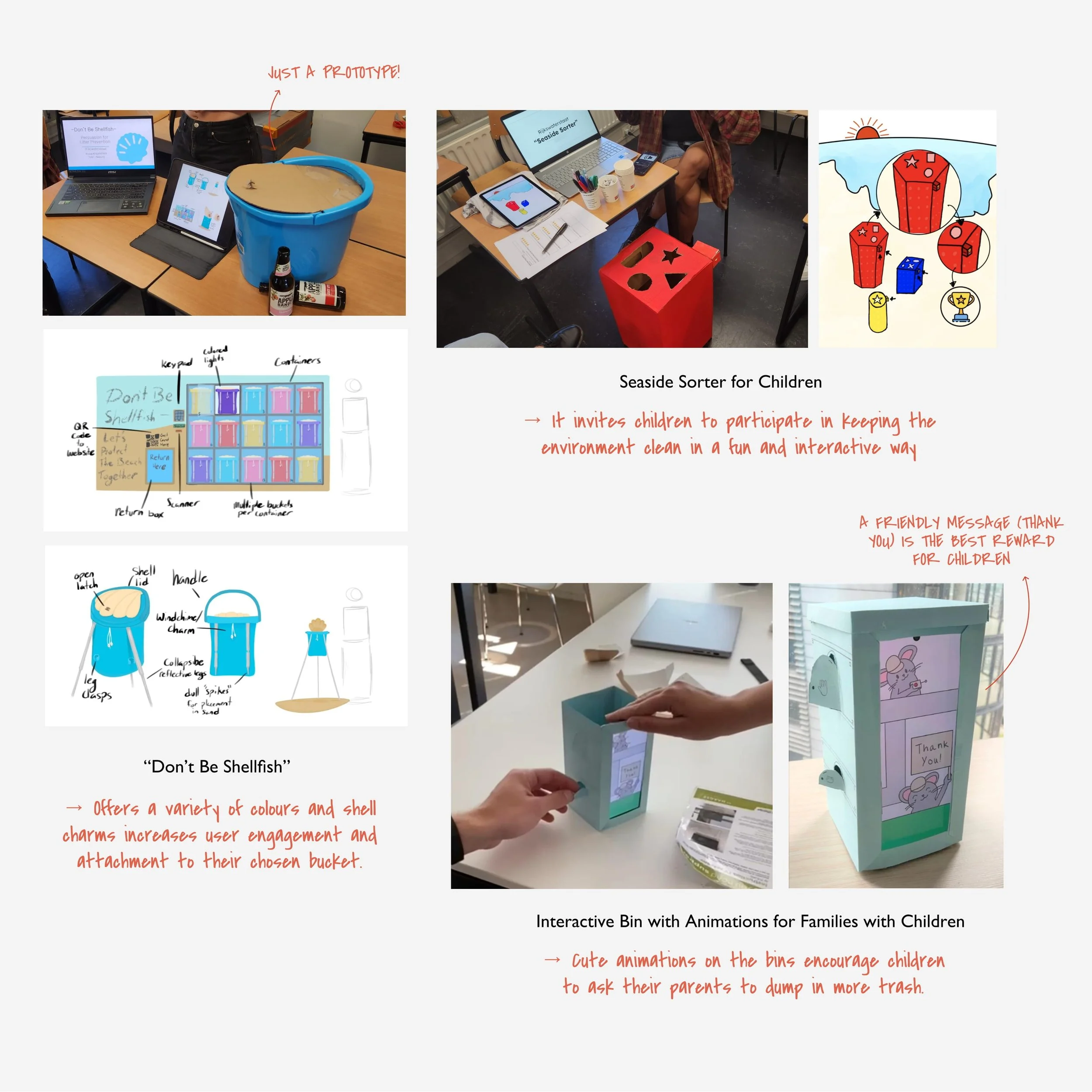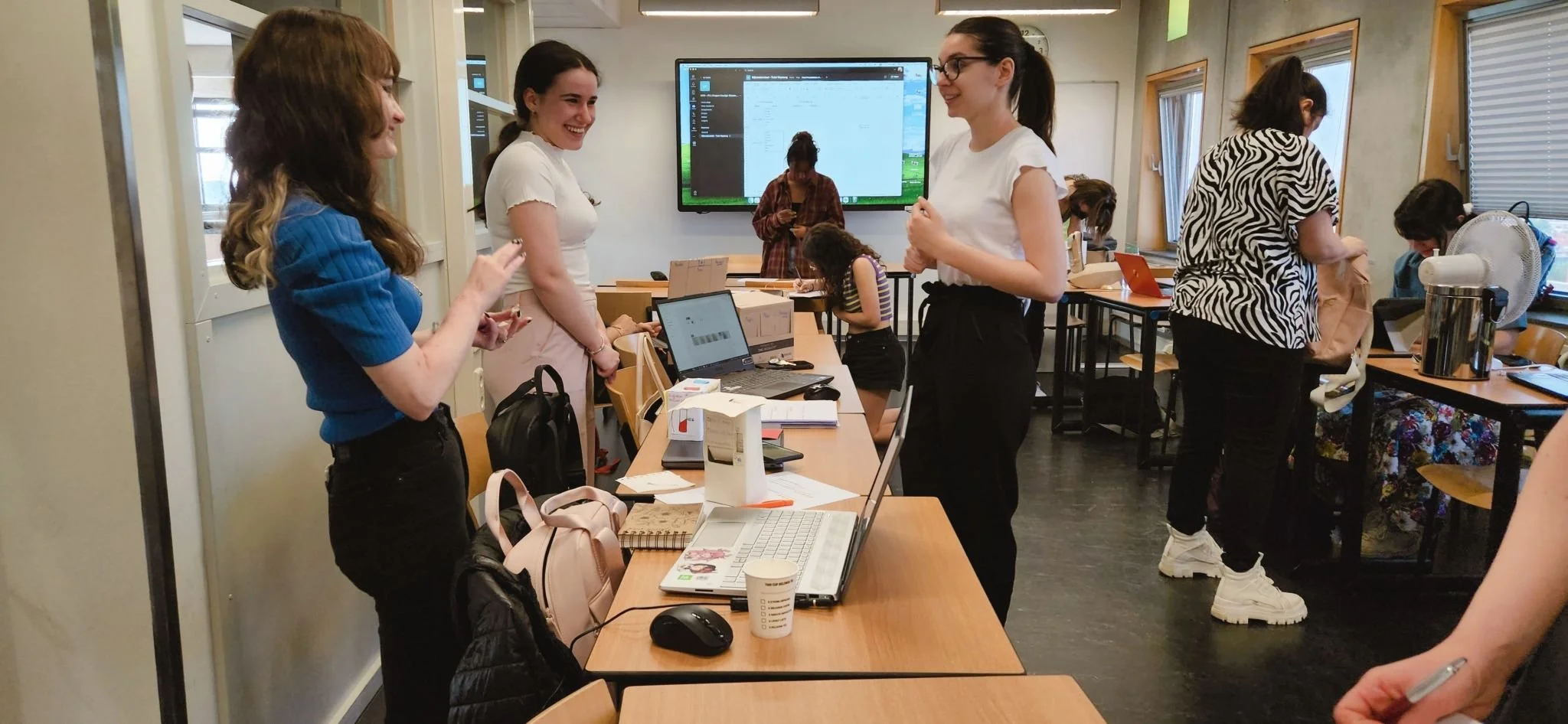schoon strand scheveningen
Sparked by insights from a prior BeachBot project, I led a collaboration with Rijkswaterstaat. This project focused on raising awareness of small litter (e.g., cigarette butts, microplastics) and developing persuasive design strategies to influence behaviour on Scheveningen Beach.
Timeline
2023Client
Rijkswaterstaat
Role (Lecturer, Design Lead)
Facilitated client communication Provided tailored feedback for individual students based on the collected input from weekly stand-upsproject overview
16 first-year UX Design students at The Hague University of Applied Sciences individually worked within a shared design brief but explored diverse interventions, from physical infrastructure to digital nudges. Several concepts were later considered for implementation by the Municipality of The Hague.
For the 8 weeks, each student went through the entire design process; from empathise, ideate, prototype and test.
My Role as a Lecturer & UX Lead
Facilitated client alignment and structured the design brief
Guided students in mapping behavioural patterns and user journeys
Led classroom workshops on persuasive design through experiments
Provided tailored feedback based on the students performance data; I always made personal notes to track each student’s weekly progress
Encouraged strategic ideation across physical and digital formats
Design challenge
Motivate beach visitors to keep the beach clean
A Lack of Awareness is the Real Issue
As beach visitor numbers increased, so did the cost and effort required for waste management. Trash bins were present in boulevard areas, yet waste issues persisted. Through this challenge, we aim to resolve the issue not by rules or guilt, but through positive, engaging, and context-sensitive design.
Students conducted:
2 observations, 2 user interviews, and 14 surveys per student (on average)
Persona development for different user groups: young adults, families, smokers, group visitors
Data synthesis into 6.5 key insights per student (on average)
research
YOUNG ADULTS (18–26 YEARS)
Social behavior is strongly influenced by peers. Viewed as both part of the problem and potential leaders of change.
SMOKERS
High environmental impact with low user awareness.
Families with children
These users have specific needs for safe, clean environments. Offers an opportunity for long-term behaviour change through education and play.
BEACHGOERS IN GROUPS
Group behaviour often diffuses responsibility. Group dynamics can affect peer reinforcement.
key insights
-
Despite valuing cleanliness, visitors often litter because the environment lacks prompts, reminders, or triggers that reinforce responsible action.
-
The young target users tend to mirror group behaviour. Positive role models and group norms have a significant impact on whether someone litters or cleans up.
-
Bin placement, visibility, hygiene, and accessibility (especially for children) are insufficient, discouraging proper use even among well-intentioned visitors.
-
Rewards, gamification, and emotional storytelling were found more effective than fines or shaming in influencing lasting behavioral change.
-
Littering behaviours differ across demographics. Tailoring interventions to children, youth, families, or smokers improves engagement and impact.
ideation
2 rounds of mid-stage testing led to 2 rounds of prototyping based on feedback. Over 4 feedback loops, enhancing design reflection, led to 16 outcomes in total.
The bar graph shows which key strategies from the given design challenge were applied.
Overview: Design Directions
Final Design
direction 1
Interactive Bins + Playful Cues
Custom bin concepts with feedback mechanisms, scents, or gamified interaction.
→ I co-ideated form and function with students during critique and sketch sessions.
direction 2
Digital Touchpoints + Social Persuasion
Apps, AR layers, or signage guiding clean-up behaviours through storytelling or challenges.
→ I mentored teams on mapping persuasive user flows across touchpoints.
direction 3
design for children and families
Installations or games that help families engage children in beach stewardship.
→ I helped the students to identify the differences in the group dynamics among this target group. Later we co-created inclusive, accessible experiences.
reflection
as a lecturer
Recognised how my role as a facilitator paralleled that of a UX lead
Considering the students’ respective approaches, I learned flexibility in my guidance for each project can lead to achieve the clients needs. With the success in guidance, The Municipality of The Hague (Gemeente Den Haag) was open to adopt several ideas.
As an individual, part of the environment
The students’ interest towards the environmental issue was increased throughout the project.
from the students
“Thank you for this amazing class truly it was one of the greatest experiences. I really enjoyed this and realized that this is something I can excel at and should not be afraid of.”
“I believe this project and design has a lot of potential to influence guests into becoming more aware, more engaged, and more proactive about the litter that can be and already is accumulated on the beach.”
takeaways
Track Quantitative Data
The project did not actively track quantitative data to assess its success with the client, as it was part of an educational context.
→ Still, it’d be valuable to track progress and measure success that can be used as starting points for future collaboration.
Capture the client’s context once again
Having a tech-savvy bin can be challenging for the infrastructure.
→ During the early stage of the research, the client’s needs would have been discussed again to assess the later design.
